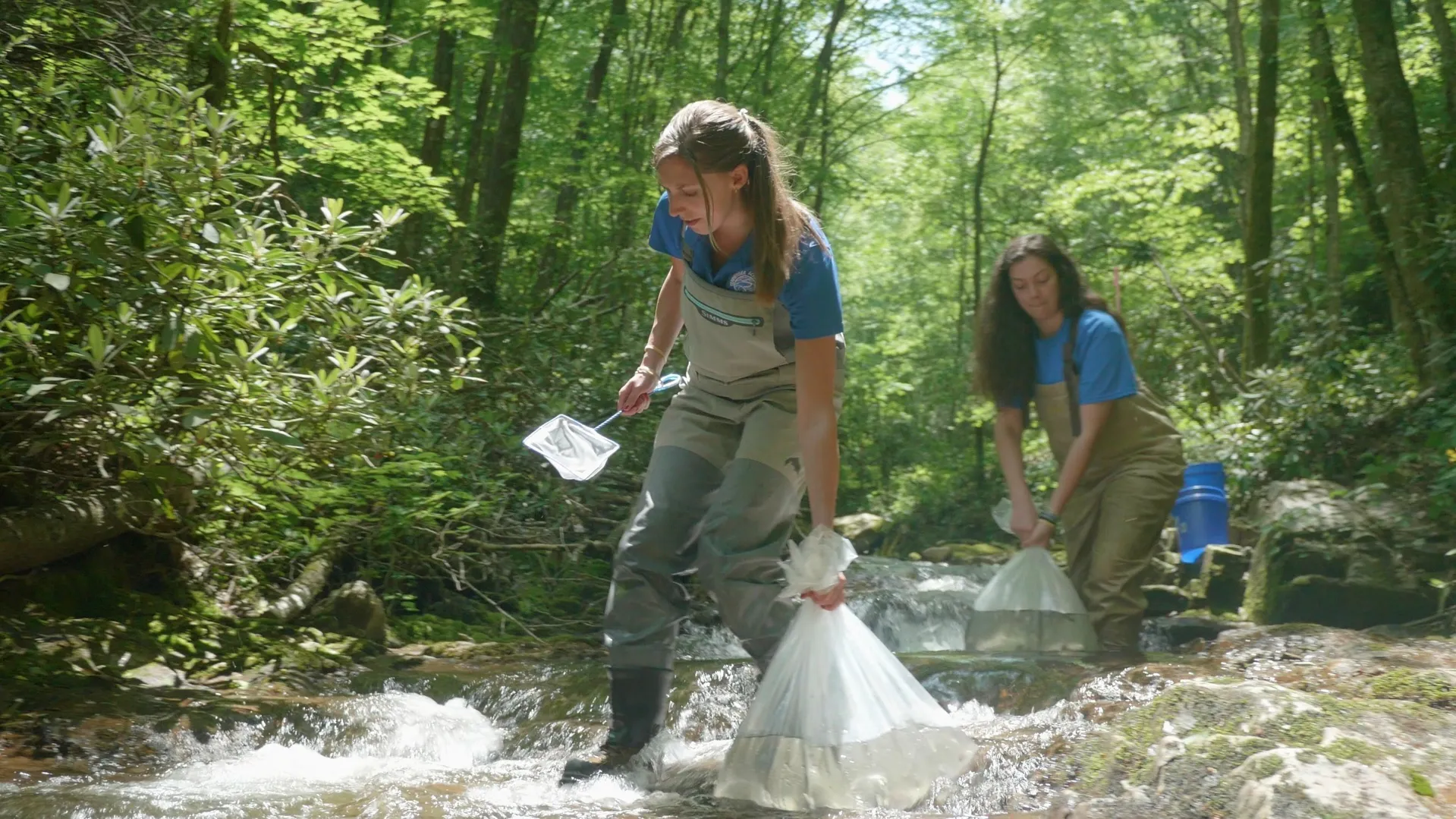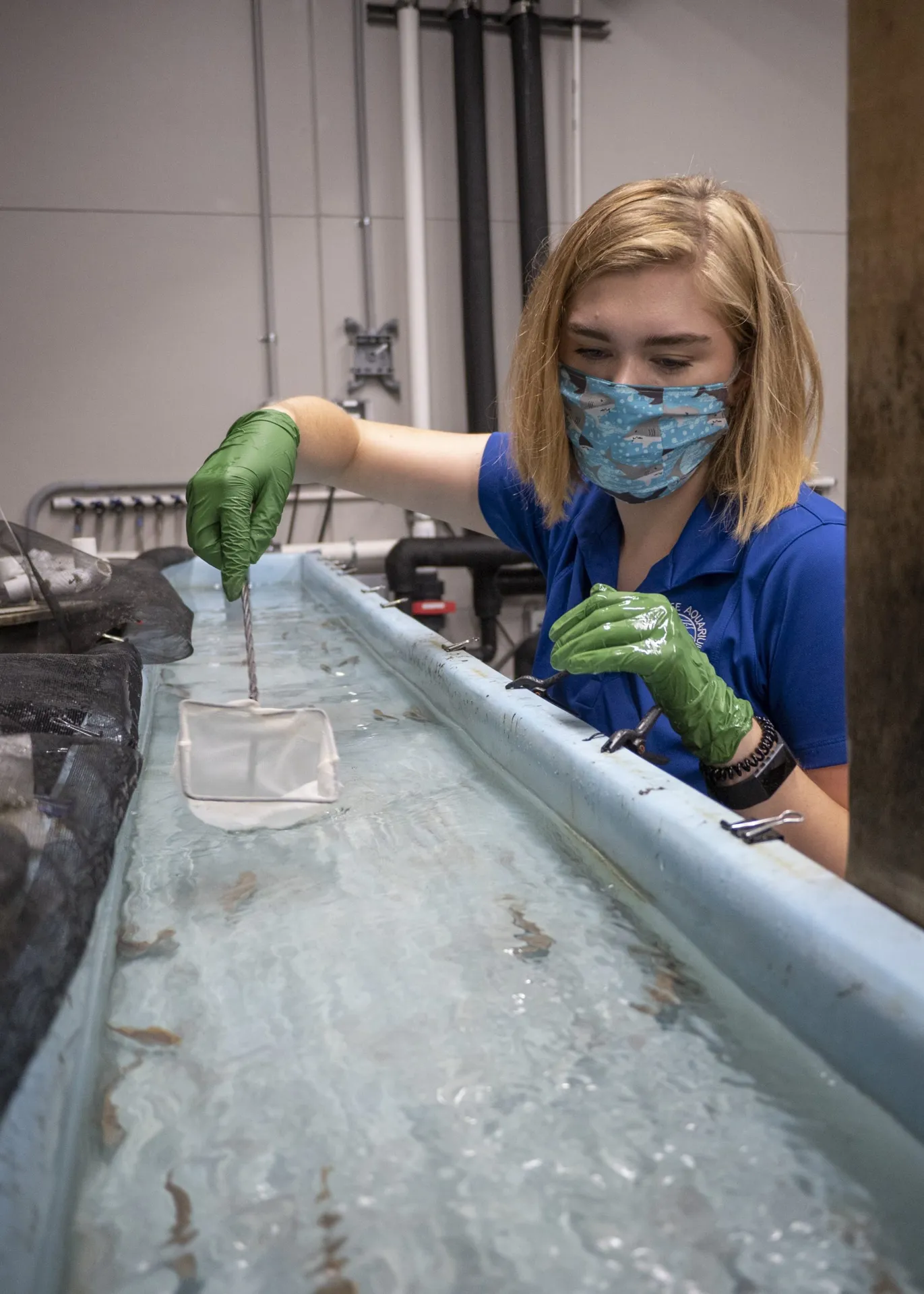For conservation scientists, restoring an imperiled species to its rightful place in nature is often a matter of playing the long game. Success is usually measured in incremental improvements borne of a tremendous amount of collaborative planning and effort.
If it’s even possible, full restoration of a species can take years, if not decades. In the case of the Southern Appalachian Brook Trout, Tennessee’s only native trout, the effort to reintroduce it to the cold-water mountain streams it once called home is nearing its 40th year.
Brook Trout can be found throughout the Eastern States and into Canada, but the Southern Appalachian strain is genetically distinct. This beautiful fish with its white-fringed fins, crimson belly and gold-and-red-speckled sides is a favorite target of anglers but now is found in just 15 percent of the streams it once called home. The withering of its historic range is a consequence of many human-induced factors, from environmental mismanagement and the introduction of invasive competitors to — scientists now fear — a steadily warming climate.
In 2012, the Tennessee Aquarium Conservation Institute joined in the effort to raise new classes of juvenile Southern Appalachian Brook Trout (lovingly referred to as “brookies” by anglers). This monthslong process begins each fall at the Conservation Institute’s freshwater science center, where adult broodstock are spawned by hand to collect and fertilize eggs.
Weeks beforehand, the water temperature in the trout’s propagation systems is steadily dropped. This change mimics natural seasonal temperature shifts that signal to wild trout that it’s time to spawn. By gently feeling females along their flanks, conservation scientists can be sure when the eggs are ready to be collected.
When the time comes, a team of biologists begin a process that is equal parts choreographed dance and assembly line.
Using dip nets, adults are collected from their tanks and immersed in a harmless anesthetic. Each fish then is weighed, measured and, importantly, dried to ensure any stray drops of water don’t affect the fertilization process.
To collect the eggs, a female trout is massaged along her flanks. This motion induces golden, pearl-like eggs to emerge, where they are collected in a mixing bowl. Scientists then use a similar technique to collect milt (sperm) from males — two for each female — to increase the chances of successful fertilization.
Once the males and females have made their contributions, scientists add a salt water solution to the eggs and milt and gently stir them together using a turkey feather. For several minutes, this mixture is left covered before the eggs are rinsed and a disinfectant is added to reduce the chances of disease transmission.
After 15 minutes, the eggs are rinsed again before being transferred to a covered jar, where they will remain for several weeks as the light-sensitive embryos continue to grow. Once the fish’s eyes begin to develop, researchers know the eggs are close to hatching, after which the fry will be relocated to nearby fish runs.



The juvenile trout will continue to grow while overwintering at the Conservation Institute. Once they’ve reached a releasable size of about two inches, they’ll be ready for release. These reintroductions are guided by and executed alongside partners in the restoration program, including the U.S. Forest Service, Tennessee Wildlife Resources Agency and the Appalachian Chapter of Trout Unlimited, which has funded the Aquarium’s propagation efforts since 2012.
Every year, more and more trout are returned to their native streams. This annual cycle of spawning, raising and then releasing young fish will continue for years to come, with efforts shifting to new Southern Appalachian streams as reintroduced populations show signs of being self-sustaining.
This now-decades-old effort is a marathon undertaking, but for the scientists involved, the expenditure of time and effort to spawn and raise these fish is paid off, with interest, when each young trout slips into the current of its ancestral waters.
“We go all the way from the adults to the juveniles that are just a couple of inches long,” says Aquatic Conservation Biologist Dr. Bernie Kuhajda. “You get to experience the circle of life and help it along right there at the Conservation Institute. The days when we get to release the fish are the culmination of all that work getting to put them back into the streams where they belong.”


